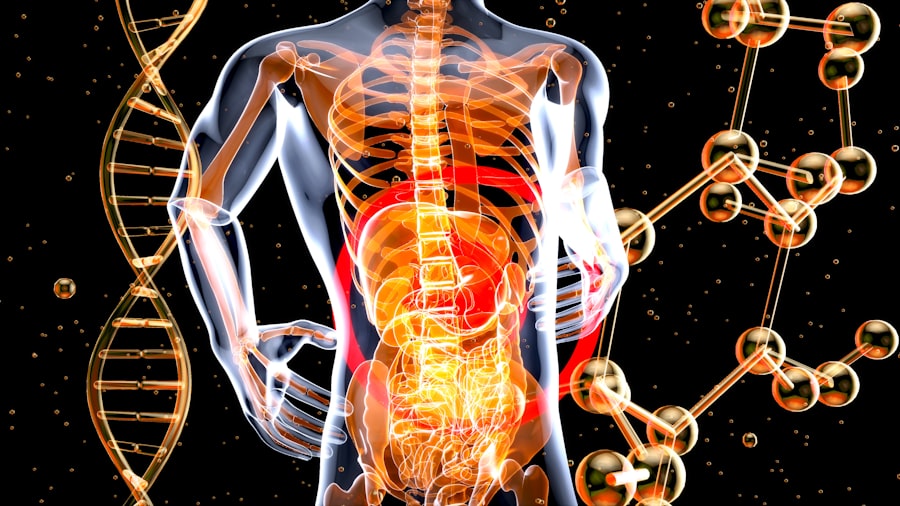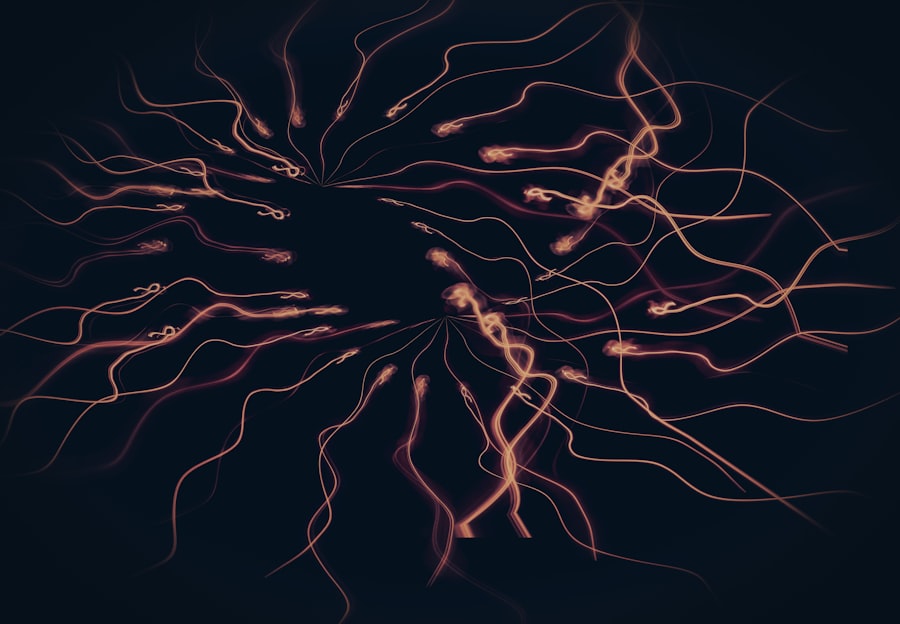Complex Post-Traumatic Stress Disorder (CPTSD) is a psychological condition that arises from prolonged exposure to traumatic events, often occurring in situations where escape is difficult, such as in cases of chronic abuse or captivity. Unlike traditional PTSD, which typically stems from a single traumatic incident, CPTSD encompasses a broader range of symptoms and emotional challenges. You may find that your experiences of trauma have led to a profound impact on your mental and emotional well-being, affecting how you perceive yourself and the world around you.
The effects of CPTSD on the nervous system are particularly significant. When you experience trauma, your body’s stress response system becomes hyperactive, leading to a state of constant alertness. This heightened state can disrupt the normal functioning of your nervous system, making it difficult for you to feel safe or relaxed.
You might notice that your body reacts strongly to stressors, even those that seem minor, as your nervous system struggles to regain balance. This dysregulation can manifest in various ways, including anxiety, irritability, and difficulty concentrating.
Key Takeaways
- CPTSD is a complex form of PTSD that affects the nervous system, leading to dysregulation and emotional instability.
- Trauma can have a profound impact on the nervous system, leading to hyperarousal, hypervigilance, and difficulty in regulating emotions.
- Dysregulation in the nervous system can manifest as mood swings, anxiety, depression, and difficulty in managing stress and emotions.
- The autonomic nervous system plays a crucial role in CPTSD, influencing the body’s response to stress and triggering the fight, flight, or freeze response.
- CPTSD can lead to an overactive fight, flight, or freeze response, making it challenging to regulate emotions and respond to stress effectively.
The impact of trauma on the nervous system
Trauma has a profound effect on the nervous system, often leading to long-lasting changes in how it operates. When you experience a traumatic event, your brain and body enter a state of survival mode, activating the sympathetic nervous system. This response prepares you to either fight or flee from danger.
However, when trauma is chronic or repeated, this survival mode can become your default state, leaving you feeling perpetually on edge.
Moreover, trauma can lead to alterations in brain structure and function.
Research indicates that areas of the brain responsible for emotional regulation, such as the amygdala and prefrontal cortex, can be affected by traumatic experiences. As a result, you might struggle with emotional responses that feel overwhelming or out of control. The impact of trauma on your nervous system can create a cycle of dysregulation, where your body’s responses to stress become increasingly exaggerated over time.
Understanding dysregulation in the nervous system

Dysregulation in the nervous system refers to an imbalance in how your body responds to stress and emotions. When you experience dysregulation, you may find it difficult to manage your emotional responses effectively. This can lead to feelings of anxiety, depression, or anger that seem disproportionate to the situation at hand.
You might notice that your reactions are often impulsive or overwhelming, making it hard to maintain healthy relationships or cope with daily challenges. Understanding dysregulation is crucial for recognizing how it affects your life. You may experience physical symptoms such as rapid heartbeat, shallow breathing, or muscle tension when faced with stressors.
These physical manifestations are often accompanied by emotional turmoil, leaving you feeling trapped in a cycle of distress. By acknowledging these patterns, you can begin to explore strategies for regaining control over your nervous system and fostering a sense of stability in your life.
The role of the autonomic nervous system in CPTSD
| Metrics | Data |
|---|---|
| Heart Rate Variability (HRV) | Decreased HRV is associated with dysregulation of the autonomic nervous system in CPTSD. |
| Sympathetic Nervous System Activity | Elevated sympathetic activity is often observed in individuals with CPTSD, leading to hyperarousal and hypervigilance. |
| Parasympathetic Nervous System Activity | Reduced parasympathetic activity is linked to difficulties in self-soothing and emotional regulation in CPTSD. |
| Respiratory Sinus Arrhythmia (RSA) | Impaired RSA, a measure of parasympathetic function, is commonly found in individuals with CPTSD. |
The autonomic nervous system (ANS) plays a vital role in regulating bodily functions that occur unconsciously, such as heart rate, digestion, and respiratory rate. It consists of two main branches: the sympathetic nervous system (SNS), which prepares the body for action during stressful situations, and the parasympathetic nervous system (PNS), which promotes relaxation and recovery. In individuals with CPTSD, the balance between these two systems can become disrupted.
When you experience trauma, your SNS may become overactive, leading to persistent feelings of anxiety and hypervigilance. This overactivity can make it challenging for your PNS to engage effectively, preventing you from experiencing moments of calm or relaxation. You might find yourself stuck in a cycle where stress triggers an exaggerated response from your SNS, further exacerbating feelings of fear and helplessness.
Understanding this dynamic is essential for recognizing how CPTSD affects your overall well-being.
How CPTSD affects the fight, flight, and freeze response
The fight, flight, and freeze responses are instinctual reactions that occur when faced with perceived threats. In individuals with CPTSD, these responses can become maladaptive and overly sensitive. You may find that even minor stressors trigger an intense fight-or-flight response, leading to feelings of panic or aggression.
Alternatively, you might experience a freeze response where you feel immobilized or unable to act in stressful situations. This heightened sensitivity can significantly impact your daily life. You may avoid certain situations or environments that remind you of past traumas due to fear of triggering these responses.
This avoidance can limit your ability to engage fully with life and may lead to feelings of isolation or disconnection from others. Recognizing how CPTSD influences these instinctual responses is crucial for developing healthier coping mechanisms and fostering resilience.
The connection between dysregulation and emotional regulation

Dysregulation in the nervous system is closely linked to emotional regulation—the ability to manage and respond to emotional experiences effectively. When your nervous system is dysregulated due to CPTSD, you may struggle with emotional responses that feel overwhelming or uncontrollable. This can lead to difficulties in processing emotions and navigating relationships with others.
You might find yourself oscillating between emotional extremes—experiencing intense highs followed by deep lows—making it challenging to maintain stability in your mood. This lack of emotional regulation can contribute to feelings of frustration and hopelessness as you grapple with the impact of trauma on your life. By understanding this connection between dysregulation and emotional regulation, you can begin to explore strategies for fostering greater emotional resilience and stability.
Identifying symptoms of nervous system dysregulation in CPTSD
Recognizing the symptoms of nervous system dysregulation is an essential step toward healing from CPTSD. You may experience a range of physical and emotional symptoms that signal dysregulation. Physically, you might notice increased heart rate, shallow breathing, or muscle tension when faced with stressors.
Emotionally, feelings of anxiety, irritability, or sadness may become more pronounced. Additionally, you may find yourself experiencing intrusive thoughts or flashbacks related to past traumas. These symptoms can be distressing and may interfere with your daily functioning.
By identifying these signs of dysregulation, you can begin to take proactive steps toward managing your symptoms and seeking support when needed.
The importance of regulation techniques in managing CPTSD
Implementing regulation techniques is crucial for managing the symptoms of CPTSD and promoting overall well-being. These techniques can help you regain control over your nervous system and foster a sense of safety within yourself. Mindfulness practices such as deep breathing exercises or meditation can be particularly effective in calming the mind and body during moments of distress.
You might also explore grounding techniques that help anchor you in the present moment when faced with overwhelming emotions or memories. Engaging in physical activities such as yoga or tai chi can promote relaxation while also providing an outlet for pent-up energy associated with trauma responses. By incorporating these regulation techniques into your daily routine, you can cultivate a greater sense of balance and resilience in the face of challenges.
How trauma-informed therapy can help regulate the nervous system
Trauma-informed therapy offers a supportive framework for individuals seeking to heal from CPTSD and regulate their nervous systems effectively. This approach recognizes the pervasive impact of trauma on mental health and emphasizes safety, empowerment, and collaboration between therapist and client. In therapy sessions, you will have the opportunity to explore your experiences in a safe environment while learning coping strategies tailored to your unique needs.
Therapists trained in trauma-informed care often utilize techniques such as somatic experiencing or EMDR (Eye Movement Desensitization and Reprocessing) to help clients process traumatic memories and regulate their emotional responses. These therapeutic modalities focus on reconnecting the mind and body while addressing the underlying dysregulation caused by trauma. By engaging in trauma-informed therapy, you can develop a deeper understanding of your experiences while cultivating skills for managing symptoms effectively.
Self-care strategies for managing nervous system dysregulation in CPTSD
Incorporating self-care strategies into your daily routine is essential for managing nervous system dysregulation associated with CPTSD. You might consider establishing a consistent self-care regimen that includes activities promoting relaxation and well-being. Simple practices such as taking regular breaks throughout the day or engaging in hobbies that bring you joy can significantly impact your overall mood.
Additionally, prioritizing sleep hygiene is crucial for regulating your nervous system. Ensuring you get adequate rest each night allows your body to recover from daily stressors and promotes emotional stability. You may also benefit from connecting with supportive friends or family members who understand your journey and provide encouragement along the way.
The potential for healing and recovery from CPTSD through nervous system regulation
While navigating the challenges of CPTSD can feel overwhelming at times, there is hope for healing and recovery through effective nervous system regulation techniques. By understanding how trauma affects your body and mind, you can take proactive steps toward reclaiming control over your life. Engaging in therapy, practicing self-care strategies, and implementing regulation techniques can all contribute to fostering resilience and promoting healing.
As you embark on this journey toward recovery, remember that healing is not linear; it takes time and patience. Celebrate small victories along the way as you learn more about yourself and develop healthier coping mechanisms. With dedication and support, you have the potential to transform your relationship with trauma and cultivate a sense of safety within yourself once again.
Complex Post-Traumatic Stress Disorder (CPTSD) often involves significant nervous system dysregulation, which can manifest as heightened anxiety, emotional instability, and difficulty in managing stress. Understanding the intricacies of how CPTSD affects the nervous system is crucial for effective treatment and management. An insightful article that delves into the nuances of nervous system dysregulation in the context of CPTSD can be found on Unplugged Psych. This resource provides valuable information on the symptoms and therapeutic approaches to address these challenges. For more detailed insights, you can read the article by visiting Unplugged Psych.
🧠 Your Trauma Is Rewiring Your Brain: Here’s How to Undo It | A Neuroplasticity & Somatic Guide
FAQs
What is CPTSD?
CPTSD stands for Complex Post-Traumatic Stress Disorder, which is a psychological condition that can develop in response to prolonged, repeated trauma, such as childhood abuse, domestic violence, or being a prisoner of war.
What is nervous system dysregulation?
Nervous system dysregulation refers to the inability of the nervous system to maintain a stable and balanced state, leading to symptoms such as hypervigilance, emotional reactivity, and difficulty in regulating emotions and arousal levels.
How does CPTSD affect the nervous system?
CPTSD can lead to dysregulation of the nervous system, causing symptoms such as heightened startle response, difficulty in calming down after a stressful event, and an overactive fight-or-flight response.
What are the symptoms of nervous system dysregulation in CPTSD?
Symptoms of nervous system dysregulation in CPTSD can include flashbacks, nightmares, panic attacks, difficulty in concentrating, irritability, and difficulty in forming and maintaining relationships.
How is nervous system dysregulation in CPTSD treated?
Treatment for nervous system dysregulation in CPTSD often involves a combination of therapy, medication, and self-care techniques such as mindfulness, relaxation exercises, and grounding techniques to help regulate the nervous system and manage symptoms.




